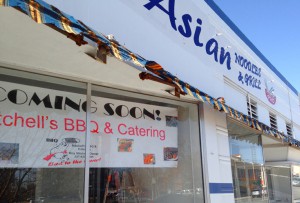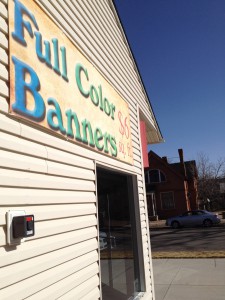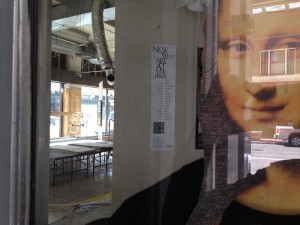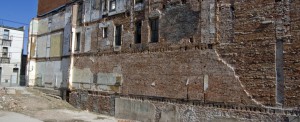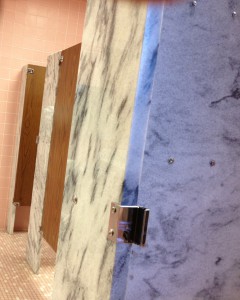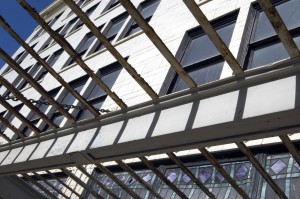DENVER – March 30, 2012 –
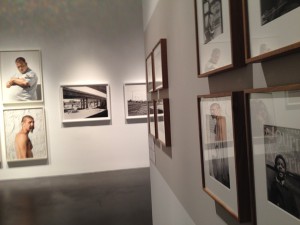
I don’t expect photography never to play tricks on me. I enjoy qualities of illusion – and formal composition – in a photo just as much as I enjoy those qualities in a painting. But, I also value the ability of photography to offer me some information about a time or place that I can no longer see, that existed when or where the photographer was when the image was made.
Going to the opening at the Museum of Contemporary Art, Thursday night, I expected the photography show to be about the esoteric qualities I like in photographs, not the documentary ones. The MCA is an elite museum of contemporary art and documentary photos run the risk of captivating viewers by nostalgia and leaving little room to see the elite, contemporary art meaning. But I was wrong. The show, More American Photos gives a lot of documentary info, and from the get go confronts nostalgia by including it.
More American Photos, runs until June 3, and includes 48 old black and whites from the Depression Era, commissioned by Roy Stryker, the head of the Information Division of the Farm Security Administration, and 48 present day photographs of our current recession era commissioned by the curator, Jens Hoffmann, director of the Wattis Institute for Contemporary Arts at the California College of Art.
Mr. Stryker was interested in realism and portraying his era. He gave his photographers a list of what they should look for: things having to do with survival and work: food, farming, migration, and – to my surprise – spruce gum. I don’t think the contemporary curator gave his artists a list. If so, no one included it in the show, although the old list was posted on the wall. The things on the list were not over used in the old photographs; I imagine the list for the present day, and realize the list makes me think about what the photographer did choose to leave in the printed image, both old and new.
People, for starters, are prominently included. Catherine Opie, a contemporary artist, photographs people at work: a plumbing salesman, a woman running a pupusa stand. Dorothea Lange, famously used a farmer and a pea picker in her images from the ’30s. In the old pictures, people are thinner and there is a lot less stuff. Reproduction of the FSA photographers have made gaunt and sparse the icons of The Depression. The kitchen of the farmer in one of Lange’s images reminds me of my grandparent’s house, which I always though was so rich, adorned with stuff not found in Suburbia: rising bread, a kettle on the stove and garden produce that needed cleaning. Their guest bedroom was equally sparse. In my memory it had five books about flowers each named and drawn like little girls. Of course, my vision of my grandparents is in color, and they were doing fine by the 1960s when I knew them, and I loved those books because I had nothing to distract me. The past fools me because of my nostalgia.
I feel no nostalgia for the stuff in the new photos. The abundance is the riches of a junkyard.
Both old and new have a uniformity: one draws me in and the other glazes my eyes. The old black and whites are printed at exactly the same size and the same two colors. The new photographs in this exhibition are all in color, printed at whatever size the artists chose – all much bigger than the curator chose to print the FSA prints. Big Photographs are what we print in the Great Recession.
Their uniformity is a cold living color, a lack of atmosphere or naturalness that comes from more greens and sunlight, and a digitized flatness. It’s seems our world is perpetually ‘partly-cloudy.’
The curator also included four prints directly about physical cloudyness. The film was destroyed by an x-ray machine at the airport. These images are bright swaths across a gray background. Does that really happen to film? And did it take four, very large images to get me to ask that question?
Another contemporary photographer from a recently gentrified area of New York, shows us the workers, business owners and patrons of her Bronx neighborhood, and she needs to resort to big blocks of text to explain what she’s up to.
Between her posters of workers and the x-ray photos were four images of Hispanics by a photographer from Minnesota. There is no way to tell the setting was Minnesota and it’s a missed opportunity. Maybe snow and migrant workers would be too cliche, but there is something missing from these images that Dorthea Lange didn’t miss.
In the opposite corner of the room were more photographs of Hispanics with tattoos, a flat stomach and a messy room: youth. Tatoos and piercings seem to talk about life in the recession-era world. Being Hispanic, is maybe part of it, too. Most of the people in the new pictures are fat and ethnic. I remember hearing a woman ask why these people were selected for depiction. She wonder why they are of ‘our recession.’
These modern people seem lonely – more lonely than the Depressioneers. Even Lange’s poor pea picker had a daughter pulled tight under her arm.
I don’t know if Catherine Opie means to do this, but the people in her photographs seem even more disconnected. Lonely, surrounded by stuff, distant from the photographer, as if that was the way we are supposed to be in a photograph about this time. Of all the contemporary images in this show, these have a richness – a thickness – that is in contrast to the digital flatness.
Another exception to this flat quality, are the large landscapes by Katy Granin. At least one has the same sense of place as the FSA photos, which make a place so interesting that even the locals might not recognize it. Granin’s landscapes are places that no one would call their locale except a homeless person, and are places that I’ve never really seen before, even when I’ve been there.
The day after seeing this show, we went to Wyoming. Cheyenne still feels cold in my memory, even though the temperature was 65 (and so was the speed of the wind). A new downtown building was begging in giant letters for restaurants to come in and rent space. The old train station is a museum – and not a great one. The menu in every restaurant is the same: sandwiches and hamburgers and no one can tell me if it’s local beef. They don’t seem to care, even though half the people in the state have something to do with ranching. Could anyone tell from my photographs that I was in Wyoming? In the Great Recession? My photos of the town have the same blandness as the photographs in More American Photographs. I feel incapable of doing anything better, or maybe it’s just the iPhone.
Here are some examples. Following mine, are examples taken with a real SLR camera, doing the same walk around town, taking similar shots.
